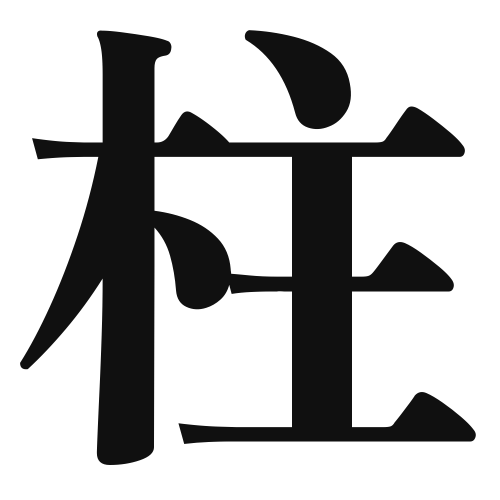1. Overview of Meaning
The kanji “柱” (hashira) means “pillar” or “post.” It refers to a vertical structure that supports a building or serves as a metaphorical support in various contexts.
2. Formation and Radical
Formation of the Kanji: The kanji “柱” is a combination of two components: the radical “木” (tree) which represents wood, and “主” (main) which indicates something that is primary or essential. This reflects the idea of a wooden pillar being a fundamental support in construction.
Radical: The radical of “柱” is “木,” which is commonly associated with trees and wood-related meanings.
3. Examples of Usage
Common Words and Phrases:
- 柱時計 (hashira-dokei) – grandfather clock
- 柱状 (chūjō) – columnar
Example Sentences in Daily Conversation:
- この家の柱はとても頑丈です。 (Kono ie no hashira wa totemo ganjō desu.) – The pillars of this house are very sturdy.
- 彼は私の柱のような存在です。 (Kare wa watashi no hashira no yō na sonzai desu.) – He is like a pillar of support for me.
4. Synonyms and Antonyms
Similar Kanji:
- 支柱 (shichū) – support pillar, which emphasizes the supportive role.
- ポール (pōru) – pole, which can refer to a similar structure but is often used in a more general sense.
Antonyms:
- 崩壊 (hōkai) – collapse, which represents the opposite of support and stability.
5. Cultural and Historical Background
Relation to Japanese Culture: In traditional Japanese architecture, pillars are essential for the structural integrity of buildings, especially in temples and shrines. They symbolize strength and stability.
Proverbs and Idioms:
- 柱のように支える (hashira no yō ni sasaeru) – to support like a pillar, meaning to provide strong support to someone.
